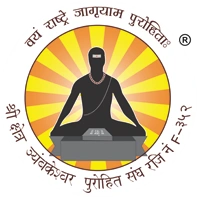Other Vidhis
Various Vaidhik Vidhies can be performed in Shree Skshetra Trimbakeshwar.
- Ekvastrisnan
- Vishnubali
- Laghurudra
- Maharudra
- Solah Somwar Udyapan
- Mhamrityunjaya Jap
- Sarva Nakshtra Shant
Rudra Abhishek to Lord Sri Trimbakeshwar
When Lord Vishnu incarnated as Sri Rama, he established a Shiva Linga at Rameswaram before crossing the sea and performed Rudrabhishek pooja to express his devotion to Lord Siva and seek his blessings. This Pooja, where Lord Shiva is worshiped in his Rudra form, is hailed by all Vedic scriptures as one of the greatest Poojas to remove all evils, to attain all desires and for all round prosperity. The Maha Rudrabhishekam is particularly performed for the sake of washing away ones sins and afflictions, for bringing peace, prospertiy and happiness, along with family togetherness.
Laghurudra
This is a more elaborate Pooja of Lord Shiva. Shiva has eleven forms of Rudra. In this Pooja all the eleven Rudras are worshiped. After the aavahan (welcoming of the deity), sthaapna (giving seat to the deity) Laghu-nyasam is recited. Then Rudra Trishati is recited. Abhishekam is done to each of the 11 Rudras with all the 11 dravyas prescribed in the Shiv Puraana. Their 11 consorts are also worshiped . This pooja is performed by minimum 11 pundits and Rudram is recited total 11 times - i.e. one recital for each of the 11 Rudras.
Mhamrityunjaya Jap
Mamrityunjaya Mantra is the most powerful of all ancient Sanskrit Mantras –
The Mahamritryunjaya Mantra was found by Rishi Markandey. It was a secret Mantra, and Rishi Markandey was the only one in the world who knew this Mantra. The Moon, Chandrama was once in trouble, cursed by King Daksha. Rishi Markandey gave the Mahamritryunjay Mantra to Sati, Daksha's daughter, for the Moon. This is how the mantra came into common knowledge.
Along with the Gayatri mantra it is one of the most widely known mantras of contemporary Hinduism.
The mantra read as under (without samput) –
" Om Tryambakam Yajamahe Sugandhim Pushtivardhanam
Urvarukamiva Bandhanan Mrityormukshiya Mamritaat"
In some Hindu Religious books the complete mantra has been mentioned as;
" OM Hrom Om Joom Sah Bhurbhuvah Swh Om tryambakam yajāmahe sugandhim pushti-vardhanam urvā rukamiva bandhanān mrityormukshīya māmritāt Bhurbhuvah Swarom Joom Sah Hrom Om "
This great mantra dedicated to Rudra as Mrityunjaya is found in the Rig Veda. It is called the Maha Mrityunjaya mantra, the Great Death-Conquering mantra. It is a mantra that has many names and forms. It is called the Rudra mantra, referring to the furious aspect of Shiva; the Tryambakam mantra, alluding to Shiva's three eyes; and it is sometimes known as the Mrita-Sanjivini mantra because it is a component of the "life-restoring" practice given to the primordial sage Shukra after he had completed an exhausting period of austerity. The Maha Mrityunjaya mantra is hailed by the sages as the heart of the Veda. Along with the Gayatri mantra it holds the highest place among the many mantras used for contemplation and meditation.
According to puranas, after being cursed by Prajapati Daksha, Chandra did penance at Prabhas Patan meditating on The Mahamrityunjaya Mantra. Lord Shiva then placed him on his head, reducing Daksh's curse by making Chandra waning & waxing for 15 days. Chandra made Somanatha temple there, the first Jyotirlinga temple, among the 12 Jyotirlinga temples.

